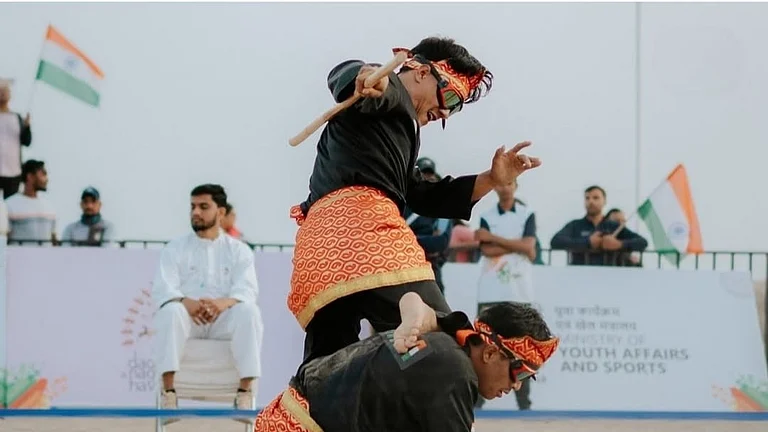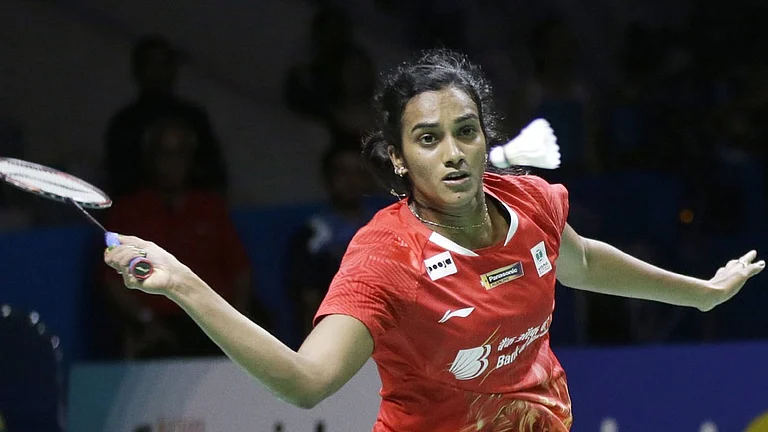Eminent sculptor Kanajiripally Sreeman Radhakrishnan’s 50-year retrospective, ‘On The Open Road’, is on at Bikaner House in New Delhi, and is proving to be popular both with the critics as well as the lay public alike. On view are 130 sculptures from 1975 onwards, with a large number of them of his muse, Musui, based on a young Santhal boy, and his female counterpart, Maiya. There are other works too; among them are one on his wife, Mimi, and another on Kristine, the ceramicist. A well-produced volume on him and his journey was released by Nvya, the art gallery, which has presented the stellar exhibition.
Radha, as he is popularly known, spoke to Atul Mital. Excerpts from a recent interview:
How was Musui, your muse, born?
During my third year at Santiniketan, a Santhal boy with overgrown hair with a charming smile asked me for some bread. I recall taking him to the studio to model for me. I gave him some money and he came back with his head shaved. Thereafter, he became my muse. It was a meeting by chance and his expression had appealed to me. His smile did something to me.
How did you conceive of Maiya?
When I decided on various avatars for Musui, I understood the absence of Maiya―the female counterpart―to complete the narrative.
In which places is Musui put up?
They are all over the world. Panjim, Kozhikode, France, Chicago, Denmark, Singapore, Hong Kong, among others.
Many of your figures have twisting figures and poses. What is the thinking behind this?
Most of the figures have movement as the prime interest, and twisting and turning gives the body extreme elasticity, and when kept in an airborne situation there is lightness. This lightness gives relief not only to the character but also to the viewer. My major pieces are airborne sculptures supported by arms and with their bodies thrown into space. This evokes lightness, which is a source of relief from the humdrum of life.
What does this show signify to you, apart from the collection of works?
This is the 50th year of my sculpting, including my student days and my 43 years in Delhi, which has gone into this collection, plus the 12 years of Santiniketan. The exhibition has six years of my crowd works also.
Which sculptors were major influences at Santiniketan?
Among the senior-most sculptors who lived and worked there was Ramkinkar Baij, whose presence was a driving force for me. Sarbari Roy Choudhury played a major role in sculpting me to be a sculptor. Somnath Hore too is important.
Tell us about your creative process. How does a sculpture originate for you?
For every sculpture, there is a lot of planning. This includes sketches, and sometimes detailed drawings; working with wax on a small-scale; and, even to make a maquette in bronze can come in. You start with a clay structure where the clay modelling is done in scale.
What are the techniques you use typically?
Since I work with bronze as a major medium, the lost-wax method is used for casting.
What is your aim as an artist?
My aim is to reach out to people sharing sensibilities and to establish human understanding.
What is the role of positive thinking in success and what advice would you give to newcomers?
Positive thinking is a kind of journey one should make the best use of and passionately engage in, with a hope to reach out to the destination. The journey should be enjoyed.
Sculpting is a way of life that has no shortcuts and the result is a long wait. So patience is what works the most.
























